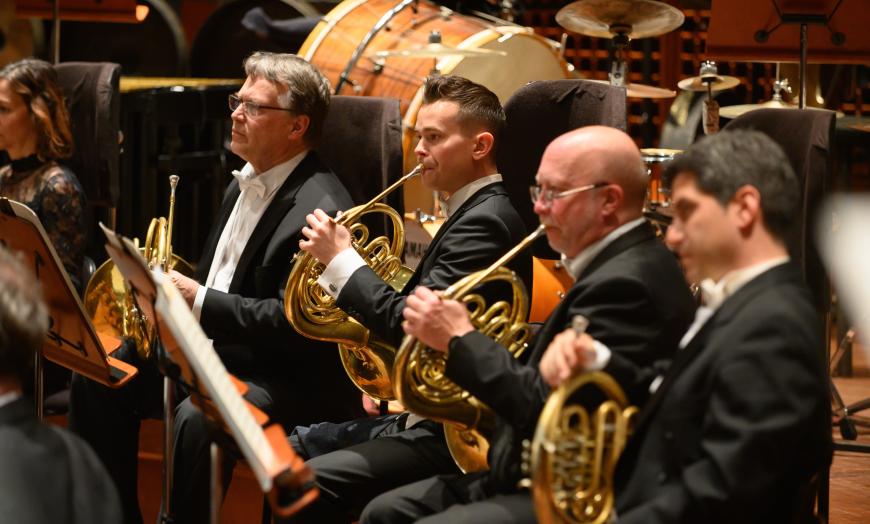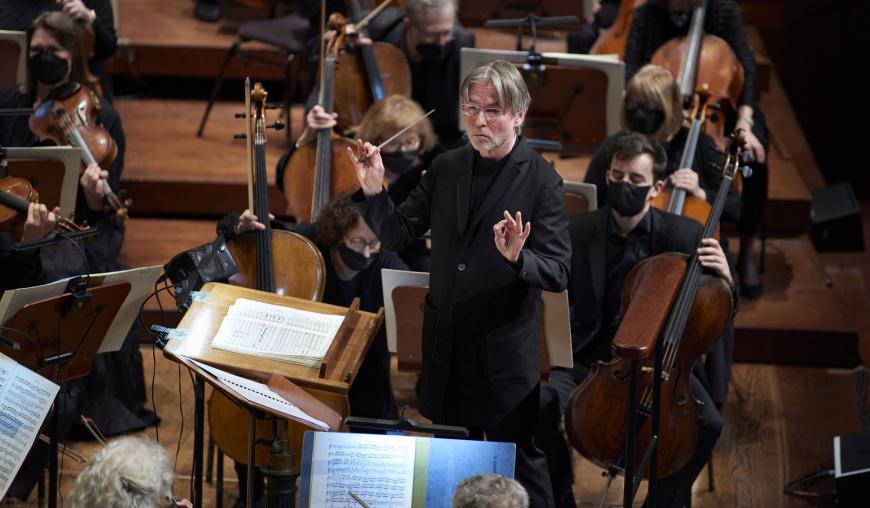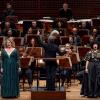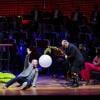
Birds were in ample evidence at Davies Symphony Hall on Saturday, Oct. 8: not actual feathered creatures, but birds of the imagination. In an inventive program this weekend, Esa-Pekka Salonen and the San Francisco Symphony celebrated the symbolism of birds in music that explored the myth and mystery of avian dance and flight, nesting and nurture.
The concert opened with the U.S. premiere of Daniel Kidane’s Sun Poem, a warmly personal work honoring the recent death of the composer’s father and the birth of his son. The British composer’s commissioned piece acknowledges the tense anticipation of threshold events like birth and death. Moments of introspection are framed by excited “twitterings” and “murmurations” — Kidane’s words for the way birdsong and bird flight inspire his music. Fragments of old tunes and bits of ambient sound — bells especially — create a rich symbolic landscape. The piece ends in a beautiful passage of warm, mysterious transformation.

Jean Sibelius’s Luonnotar, a tone poem from 1913, is based on the Finnish national epic Kalevala. The poetic text is murky (at least in the translation the audience was given) but intriguingly symbolic: A primeval spirit, pregnant and adrift on a stormy sea, offers her knee as a perch for a seabird to nest upon; in the tumult of tempest and childbirth, the seabird’s eggs are shattered and transformed into moon and stars.
Sibelius, in the midst of an artistic and personal crisis, took this myth as the text of a passionate song about the urgency and the tragedy of creation. The soprano soloist in this gripping performance was the excellent South African-born Golda Schultz (also heard last week at Davies in Gustav Mahler’s “Resurrection” Symphony). Although Sibelius’s tone poem is only 10 minutes long, it compresses a powerful sequence of events and emotions into an extraordinarily demanding soprano role — such that the soloist becomes a metaphor for, or participant in, the struggle of creation. The music challenges her to deliver a wide emotional and tonal range, with sudden leaps across a gamut of two octaves from low B to high C-flat. Schultz’s empathetic singing delivered a message of courage and sorrow, at once plangent and assertive.
Igor Stravinsky’s The Firebird comes from the same decade as the Sibelius (and to some degree, the same early-20th-century fascination with myth and folktale), but what a contrast. Compared to Sibelius’s compressed and introspective tone poem, Stravinsky’s ballet is determinedly theatrical. It is grand and episodic, full of the most startling orchestral colors. Virtuosic solos surprise us from every part of the stage — violin, cello, and viola; oboe, bassoon, and horn, with flute, piccolo, English horn, and clarinets all joining in the fun; trumpets, trombones, and tubas onstage and in the balconies; and at the back, mallets, celesta, bass drum, timpani, and three harps, all with shining solo moments.

Firebird’s theatrical episodes are both dramatic and captivating: an evil tyrant (whose music is, of course, full of fierce and sneering dissonances); 13 enchanted princesses and an unspecified number of petrified warriors, eventually freed by a heroic young prince; and that bird of fire, full of spirit and enchantment. And what better theatricality than to end with a grand and eminently memorable tune (that’s also singable, even if, in typical Stravinsky fashion, it’s written in 7/4, that oddly limping and irregular meter).
Conductor and orchestra seemed in perfect sync in this virtuosic, even athletic, performance. Not least of the pleasures was watching Salonen’s lithe and expressive baton, as balletic as the firebird itself. The finale brought the entire audience to its feet seconds after the music ended — and rightly.
While I was grateful to get a chance to experience Firebird in its full original score, I was reminded that dance music without the dancers is sometimes a little less than captivating. There’s a reason the composer created three shorter suites for the concert hall. I made my way home singing the extravagant tunes of Stravinsky but also quietly treasuring the compressed passion of Sibelius.



